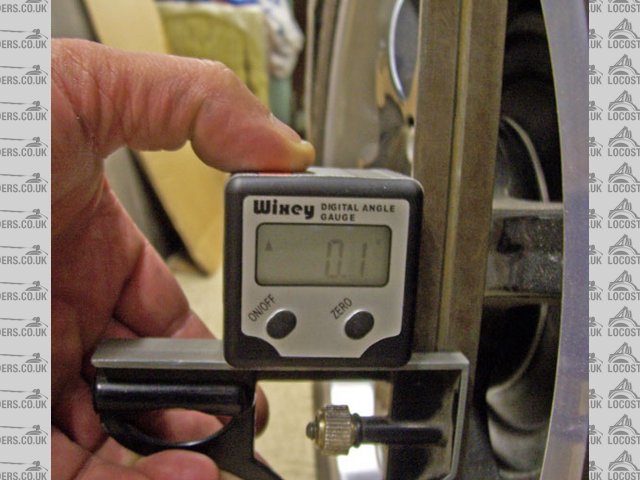
camber measurement, will this work?
franky - 2/4/11 at 09:40 PM
I've a bit of flat steel bar, that goes against the wheel rim, i'm holding it onto the wheel with cable ties top and bottom, i've
marked on the bar where the cable tie sits and where the camber gauge sits.
It always sits on the same part of the rim, I make sure its straight using a spirit level.
Measurements are taken after setting ride height.
I've set the front however there's 0.1 degree difference, -1.5 deg front left Vs -1.4 deg Front right. I take it 0.1 degree difference is
ok?
Does the above seem like an accurate way to measure camber? its the best way I can think of as its fully repeatable....
I'm ready to stand corrected!
Duncan Mould - 2/4/11 at 09:51 PM
Heath robinson approach but it should work, providing your garage floor is flat ?
Not a bad way of doing it. i have a really old Dunlop caster camber gauge in an original wooden box that works well enough for me.
I can see your reasoning and believe that the difference is acceptable, by the time its done a few hundred miles it will have changed slightly anyway.
adithorp - 2/4/11 at 09:53 PM
Sounds good to me as long as the bar is strieght. Worth checking again rolled 1/2 a turn of the wheels to account for any slight variation/buckle in
the wheels (do the same when setting toe as well). If the readings different take the average. Also turn the car around 180' and re-check to
allow for any slight slope on the floor. Again average the readings.
You'll be lucky to get to less than 0.1 difference.
[Edited on 2/4/11 by adithorp]
franky - 2/4/11 at 10:14 PM
Forgot to add that I was moving the car backwards and forwards between readings, new wheels also that should help. Its a flat floor in the garage.
the bar is straight against everything I checked it against. I've taken multiple readings and there always exactly the same. Camber measurement
is done using a super tracker caster/camber/KPI gauge thats calibrated.
adithorp - 2/4/11 at 10:42 PM
quote:
Originally posted by franky
Its a flat floor in the garage.
But is it perfectly level. 1/2 degree off level in the floor will result in 1 degree difference between the two sides. Turning the car around to face
the other way, re-check and if different average the two readings will eliminate this.
A bit of thinking and you should know which way and by how much the floor slopes (if it does) so you can just allow for it next time and not have to
turn the car around.
rusty nuts - 3/4/11 at 06:44 AM
If you are using "book " top wishbones with the transit ball joint screwed directly into thew wishbone you will be very lucky to get both
sides the same due to the design , the Rally Design type with a threaded sleeve would be more accurate but more expensive
franky - 3/4/11 at 06:58 AM
quote:
Originally posted by adithorp
quote:
Originally posted by franky
Its a flat floor in the garage.
But is it perfectly level. 1/2 degree off level in the floor will result in 1 degree difference between the two sides. Turning the car around to face
the other way, re-check and if different average the two readings will eliminate this.
A bit of thinking and you should know which way and by how much the floor slopes (if it does) so you can just allow for it next time and not have to
turn the car around.
That does make sense.
Won't the tire take away a bit of deflection as its the rim i'm measuring?
Its a good learning curve all this stuff, it just takes ages to measure/change/move/measure
907 - 3/4/11 at 08:24 AM
Hi All,
The pic below shows my digital spirit level/protractor/angle gauge, call it what you will.
I use it for all sorts of things, folding sheet, compound angles in the band saw, etc, etc.
It's main asset is that it can be zero'd, so if the garage floor isn't level it still gives an accurate reading.
For wheel camber I placed a straight edge across the chassis and set the gauge to zero.
I then hold a straight edge vertical against the wheel rim and it measures the angle between
the chassis and the wheel, or camber angle. Same for the other side wheel, but you do have
to keep it facing the same way, i.e. display facing front (or back) for all three readings.
In the pic I have sat it on a square as I needed my other hand to work the camera.
They cost around £25, but IMHO they are worth their weight in gold.
HTH
Paul G


Digi angle gauge



